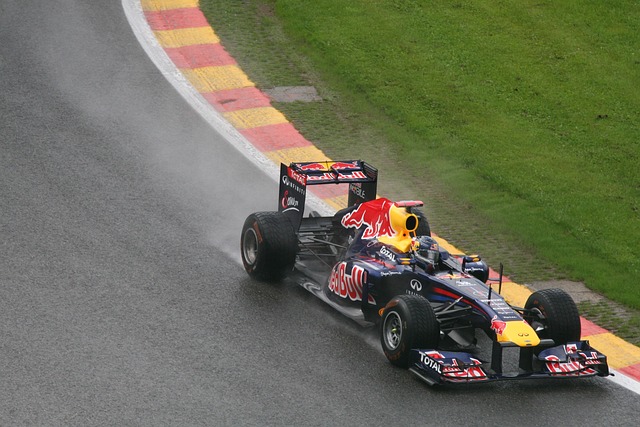Betting exchanges offer a unique alternative to traditional sportsbooks, giving bettors more control over their wagers. Instead of betting against the bookmaker, you’re betting against other players. This peer-to-peer setup opens up a range of strategic possibilities—from setting your own odds to trading positions during live games.
The concept may seem complex at first, but with the right approach, betting exchanges can offer better odds, higher flexibility, and more opportunities to secure profit or manage losses. By learning how to back and lay bets effectively, you can approach betting not just as a game of chance, but as a dynamic marketplace.
For those willing to invest time in understanding the mechanics, betting exchanges can become a powerful tool in your wagering arsenal—especially when used during live events, market shifts, and high-volume sporting occasions.
What Is a Betting Exchange?
A betting exchange is a platform that allows users to both place bets (“back”) and accept bets from others (“lay”). This model removes the traditional bookmaker from the equation, letting supply and demand determine the odds.
When you back a bet, you’re predicting that something will happen—like a team winning a match. When you lay a bet, you’re betting that something won’t happen—such as a favorite losing or not scoring first.
This two-sided structure gives you more flexibility and often leads to better odds than what’s available through regular bookmakers. The exchange takes a small commission from net winnings, but there’s no built-in profit margin like with sportsbooks.
Betting exchanges also allow you to trade bets as odds shift, meaning you can secure profits or cut losses before an event ends—similar to trading in financial markets.
Backing and Laying Explained

Backing a bet is straightforward: you choose an outcome and bet on it to occur. If it happens, you win based on the odds you accepted.
Laying a bet means you offer odds to another user, essentially acting like a bookmaker. If the event doesn’t go the way the backer predicts, you win their stake. But if their prediction is correct, you pay out according to the odds you offered.
For example, if you lay a football team at odds of 3.0 with a stake of $10, you could lose $20 if that team wins (your liability), but win $10 if they lose or draw.
Understanding this risk-reward relationship is essential before laying bets. While laying opens up more betting options, it also requires careful risk calculation and sufficient bankroll to cover liabilities.
Taking Advantage of Better Odds
One of the biggest advantages of using a betting exchange is access to better odds. Because users compete to offer the most attractive prices, you’ll often find odds that are more favorable than those at traditional sportsbooks.
This can make a big difference over time, especially for regular or high-stakes bettors. For example, if a bookmaker offers odds of 2.50 and the exchange offers 2.70, backing the latter increases your long-term return on investment.
Exchanges also allow you to request your own odds. If you’re confident a price will rise, you can place a back bet at higher odds and wait for someone to match it. This ability to negotiate odds creates unique opportunities not available through fixed-odds betting platforms.
Trading Bets for Guaranteed Profit
Perhaps the most powerful aspect of betting exchanges is the ability to trade bets during an event. This involves backing an outcome at high odds and laying it later at lower odds (or vice versa), locking in a profit regardless of the result.
This method, often called “greening up,” is especially popular in in-play markets where odds shift quickly. For instance, you might back a tennis player at odds of 4.0 before a match. If they win the first set and their odds drop to 2.0, you can lay the same player to secure a profit whether they win or lose.
Trading requires fast decision-making and good market awareness, but it gives you the ability to exit a bet early and avoid full exposure. It’s a useful tool for both risk management and strategic betting.
Managing Risk and Bankroll Effectively
Betting exchanges come with their own risks, especially when laying bets. Since you’re liable for larger amounts than your stake, it’s vital to understand your exposure before confirming a bet.
Always calculate your maximum liability and make sure it fits within your bankroll. Avoid laying large odds unless you’re confident and can cover the potential payout. A single bad lay can wipe out multiple smaller wins.
Setting limits and using stop-loss strategies can prevent large losses. It’s also wise to keep track of all your positions, especially if you’re trading across several markets simultaneously.
Bankroll discipline remains key—never risk more than a small percentage of your total balance on any single position, no matter how safe it appears.
Choosing the Right Events to Target

Not every sporting event is suited to betting exchanges. The most active and liquid markets—where odds are stable and bets are matched quickly—tend to be popular sports like football, tennis, horse racing, and major tournaments.
Stick to high-volume events if you want to get your bets matched quickly at fair prices. In quieter markets, the lack of liquidity can result in wide spreads between back and lay prices, making it harder to trade or get value.
Live events, in particular, offer excellent exchange opportunities due to frequent price changes. If you’re experienced and fast, you can capitalize on in-game momentum shifts to trade for profit or reduce loss exposure.
Final Thoughts: Practice and Patience Pay Off
Betting exchanges offer a high level of control and strategic depth, but they also demand patience and learning. Unlike fixed-odds betting, there’s a steeper learning curve—especially when it comes to laying and trading positions.
Start with small stakes and take time to understand how the platform works. Practice backing and laying in markets you follow closely, and gradually explore live trading as you grow more confident.
In time, using a betting exchange can transform how you approach sports betting—offering better odds, flexible strategies, and opportunities that regular sportsbooks simply can’t match.
